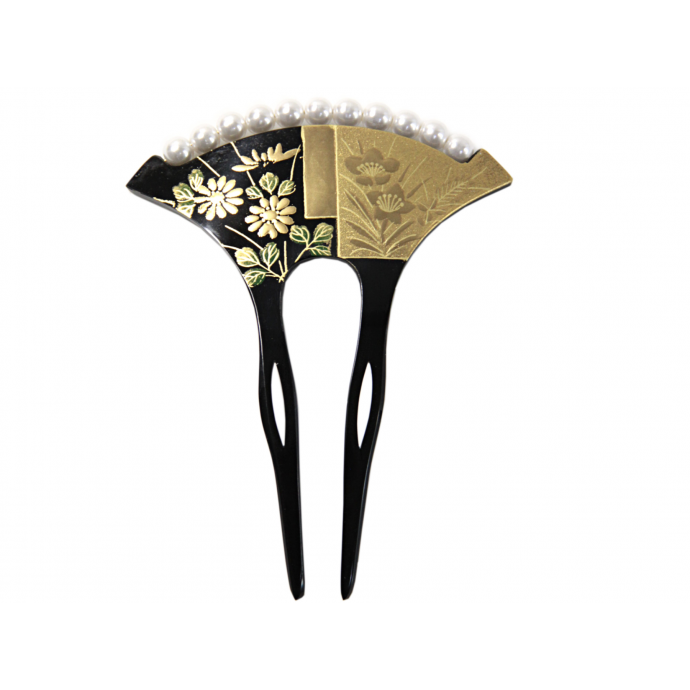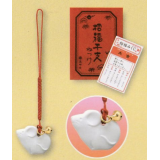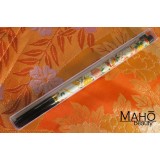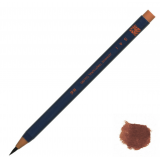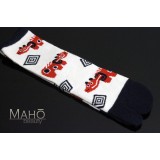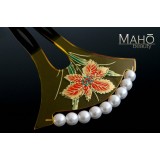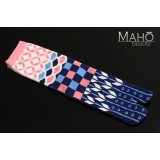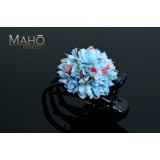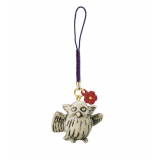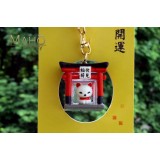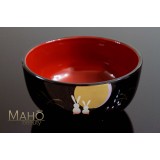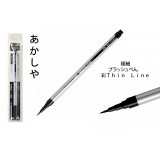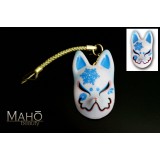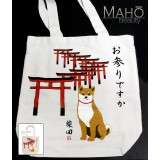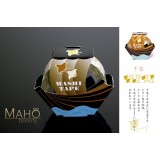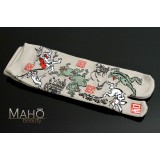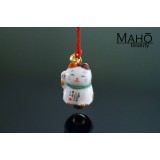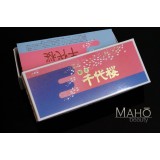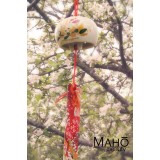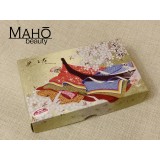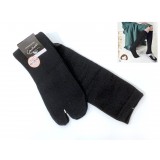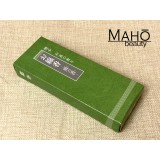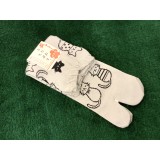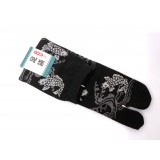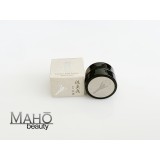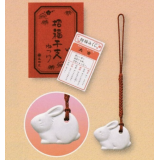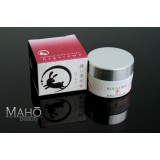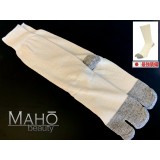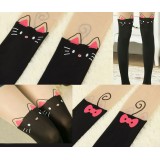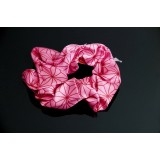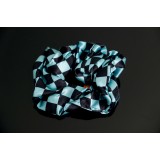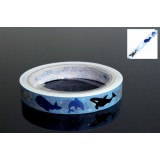
Charming and elegant Traditional JAPANESE hair accessory - KANZASHI HAIR COMB IN BLACK lacquer RESIN WITH GILDED EMBELLISHMENT AND FAUX PEARLS. Maki-e style. Icons of Autumn – Kiku and Kikyo
Unique and original hair accessory.
Impressive, elegant and classic Japanese design.
Wonderfully ornamented Kanzashi style hair comb with traditional lacquered Maki-e design floral pattern.
The styling of this charming comb is typical of Japanese design. The comb is made in glossy black resin. The heading is hand decorated with lacquered design done in gold and silver with lovely picture of Japanese chrysanthemum and Kikyo flowers.
The Chrysanthemum, or Kiku 菊 in Japanese, is the official flower of Japan and has become a symbol of longevity, rejuvenation, power, dignity and nobility. The Chrysanthemum is considered the flower of autumn, as it start blooming on September. Sometimes it is called “the short day flower” (because most of these blossoms come up in autumn when the days are shorter). Kiku became an important motif in painting, literature, and other works of art from the Heian period to the present day. It is a symbol of the Japanese Throne and crest (mon) of the Imperial Family; also a motif in many other family crests. Nowadays chrysanthemum can be found on the 50 yen coins, kimono cloths, wallets, bags, and many other accessories in Japan.
Second motif on this kanzashi comb is Kikyo or Kikyou (ききょう) or Japanese bellflower.
This wildflower is also intimately associated with the Autumn season in Japanese culture. With its vivid purple blossoms that come into bloom at the end of summer, kikyou is considered one of Japan's “Seven flowers of Autumn” (Aki no nanakusa*). It is mentioned in numerous haiku devoted to the season. Japanese geisha adorn their hairstyles with hana kanzashi as dictated by the season; in the month of September, these traditionally include kikyo. As its balloon-like buds bloom into five petals in an arrangement, resembling a star kikyo is also often used to represent the interconnected relationships between the five elements of wood, earth, fire, water and air.
The back of the comb is decorated with picture of bamboo plant, which in Japan is a symbol of strength and flexibility. The delicate bamboo plant bends beneath the weight of winter snow but does not break.
This beautiful vintage style Japanese hair comb is the type called "Kanzashi." The history of Japanese Kanzashi (ornamental hairpin) goes back as far as 3000 years ago. In the prehistorical Jomon era (approx. 1000 B.C. to 300 A.D.), it was believed that a supernatural power inhabited this thin stick. Wearing this stick as a charm against evil spirit became the origin of Kanzashi. The derivation of the term "Kanzashi" is "“Kami-zashi”" meaning “hair stick”. People decorated their hair with flowers when they were inviting Deities. Another theory is “"Ka- zashi”" meaning “flower stick”.
Such ornaments represent a link with traditional forms in Japanese hair accessories, which have been used for hundreds of years before Western styles began to overtake traditional forms.
The top of the comb is decorated with a line of stylish 8 mm spherical faux pearls. Comb teeth have enough length to hold even thick hairdo.
Material: Acrylic resin, artificial pearls.
Size (Cm): Length: 13-14; Width: 6 - 10
Please note: Details and colors of the images might be slightly different from the actual product. As it is hand made, small imperfections are common in the lacquer work on kanzashi in this quality range.
Absolutely lovely item - it would make a unique gift.
* 秋の七草 (Aki no nanakusa)“The seven grasses of Autumn” were often mentioned in verses of the Manyoshu, the earliest collection of Japanese poetry and song. These seven autumn flowers provide visual enjoyment. Their simplicity was very much admired: they are small and dainty yet beautifully colored. The capacity of the autumn grasses to inspire deep emotion among people in olden days may be viewed through their composite nature of beauty tinged with sadness. More than flowers of any other season, autumn grasses washed by rain and bent in the wind attain a beauty unsurpassed, and because of this type of beauty they were also the flowers used for the tea ceremony.

